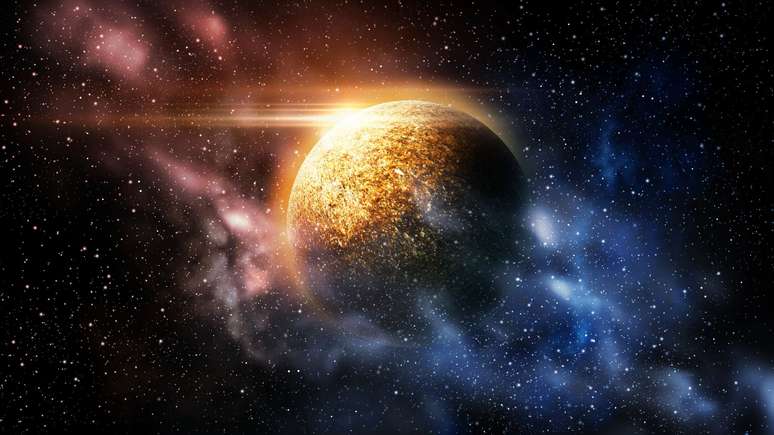The theory based on quantum physics says that, while our reality moves forward in time, that of the antiuniverse would go backwards.
The universe and its mysteries have always fascinated human curiosity. Since big Bangthere are about 13 billion yearseven distant galaxies that we cannot yet reach. Recently an Indian PhD student presented a novel idea: the existence of an antiuniverse. But what does this really mean?
Naman KumarPhD student at Indian Institute of Technologypublished an interesting study in the journal Gravitation and Cosmology. In it, Kumar explores the possibility of a parallel universe, composed of antiparticles. Think about the electron and the positron: while one has a negative charge, the other has a positive charge. Kumar suggests something similar, but on a cosmic scale.
What is the antiuniverse?
According to Kumar, the antiuniverse would be a sort of mirror of our universe, but composed entirely of antiparticles. This means that while our reality moves forward in time, that of the antiuniverse would move backwards. This concept is based on quantum physics, which often works with pairs of entangled particles whose states are interdependent.
When the Big Bang created our universe, Kumar theorizes that an anti-universe was simultaneously formed. This pair-creation could be the key to understanding the enigma of dark energy, a mysterious action that accelerates the expansion of the universe.
Antiuniverse and Dark Energy: What’s the Connection?
Dark energy is known to be a force that drives the accelerated expansion of the universe. However, its nature is still enigmatic. According to Kumar’s theory, if we accept that the universe and the antiuniverse were created together, then the accelerated expansion of the cosmos could be understood without the need for a “new” force.
In this scenario, dark energy could be explained as the effect of the synchronized expansion of the antiuniverse, but in a time direction opposite to ours. This radical vision reshapes the way we understand not only the expansion of the universe, but also the nature of time itself.
Is there evidence for this theory?
To test the anti-universe theory, scientists analyzed galaxy clusters, such as the one Group of bullets (1E 0657-56). This cluster is the result of a cosmic collision and offers clues to the presence of antimatter. Although no concrete results have been obtained yet, the observation that there is more matter than antimatter in our universe raises questions.
Kumar suggests that the “missing” antimatter may be in this antiuniverse. Further studies and technological advances are needed to obtain substantial evidence. This theory is still in its infancy, but it opens up avenues for new scientific investigations.
How important is this theory for modern science?
In addition to offering a possible solution to the mystery of dark energy, the idea of an antiuniverse also challenges many of our conventional perceptions of time and space. Kumar points out a fascinating parallel to black hole physics: the area of the event horizon, which increases with time. This concept can be transferred to the study of the antiuniverse and help us better understand the expansion of the cosmos.
Many theories attempt to explain dark matter and dark energy, but few have as elegant a component as the idea of a parallel universe created at the same time as our own. If proven, the antiuniverse theory would represent one of the most significant discoveries in modern cosmology.
Source: Terra
Rose James is a Gossipify movie and series reviewer known for her in-depth analysis and unique perspective on the latest releases. With a background in film studies, she provides engaging and informative reviews, and keeps readers up to date with industry trends and emerging talents.






